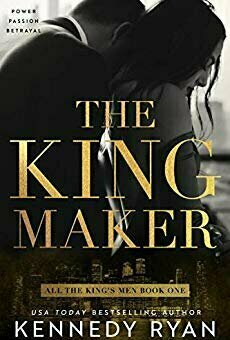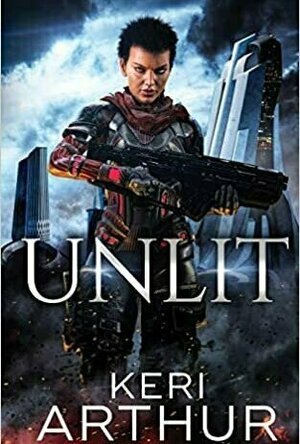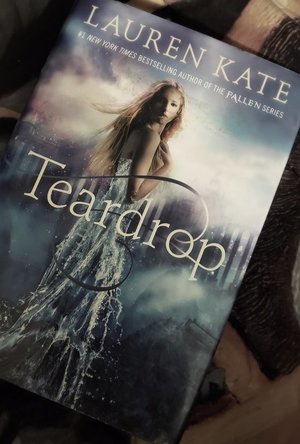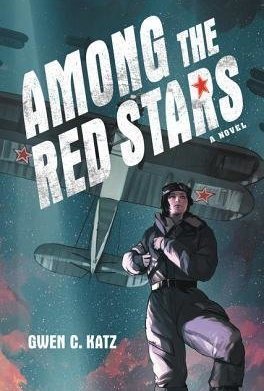
Made in the USA: The Rise and Retreat of American Manufacturing
Book
"There's no author whose books I look forward to more than Vaclav Smil." -- Bill Gates In Made in...
David McK (3663 KP) rated Spider-Man: No Way Home (2021) in Movies
Jan 3, 2022 (Updated Dec 24, 2023)
Sound at all familiar?
Yes, it's used as the building blocks for this movie, where Peter's identity ahs been revealed to the world by Mysterio during the end-credits of the previous movie ('Far from Home'), with a knock-on effect on friends and family.
Instead of Mephisto, however, Peter seeks help from Doctor Strange, who agrees (for reasons) to cast a spell in order that everyone would forget who Peter was - a spell that goes awry, and that leads to characters from the previous non-MCU iterations of the Spider-Man films finally joining the MCU. Some of those characters are more effectively scary here than they were previously ...
This is maybe a little bit slow getting started, with plenty of nods and Easter Eggs throughout (including FEAST, where Aunt May works) to both the comics, games, and previous Spider-Man movies, and ends with, effectively, the character of Spider-Man being reset: no longer part of The Avengers; no longer with MJ, Aunt May, Ned or even 'Happy' Hogan knowing his identity, back to being your 'friendly neighbourhood Spider-Man'.

AnastasiaDate - meet, date & chat with new people
Lifestyle and Social Networking
App
AnastasiaDate - meet, date & chat with new people Date single matches worldwide with the...

Drama - Deluxe Edition by Bananarama
Album
The first ever expanded edition of Bananarama's ninth studio album, 2005's "Drama", includes all the...
Leanne Crabtree (480 KP) rated The Kingmaker (All the King's Men Duet, #1) in Books
Jan 29, 2020
Maxim Cade is the son of the millionaire/billionaire laying the pipeline but is against the use of fossil fuels and his fathers companies use of violence against those protesting the pipelines build. He puts himself between a dog's jaw and Lennix and as they are carted off to jail they bond with each other and a connection is formed that lasts years, though they don't see each other again for another four.
This book spans a lot of years. 14 from that meeting when Lennix is 17. They are now both successful in their own right. Maxim with his green energy business and Lennix with her, erm...I don't know the title for what she does. She helps political figures get into office, fighting for those who are helping the minorities.
I get that both are going after important issues that are happening in America, and the world, but I did feel like at times it was a bit repetitive and very in-depth with the information we're told - which I'll admit, I found a bit boring. Also, politics is not for me and it began to take up a fair part of this book towards the end.
Some of the secondary characters were cool. The guy - can't remember his name, some sort of surname - who was with Maxim on the Antarctic boat? I liked him. He talked sense a lot and ended up really close with Maxim. I also liked Wallace. That bit at the party around the 70% mark when he's being - in Lennix's words - her beard, trying to keep Maxim at arms length after not seeing each other for ten years, was fun.
The connection between Lennix and Maxim was great when they were together but in the end it wasn't that much of the book. They seemed to be apart more than they were together.
I don't think I'll be reading its counterpart.

Airsoft Action - the airsoft magazine
Sports and Magazines & Newspapers
App
Airsoft Action’s focus is to inform, excite, challenge and entertain at all levels of experience,...
Lyndsey Gollogly (2893 KP) rated Unlit ( Kingdoms of Earth and Air book 1) in Books
Jan 2, 2022
Book
Unlit ( Kingdoms of Earth and Air book 1)
By Keri Arthur
Though classified as having no magic, Neve March can hear the whispers of the wind and sometimes even control her. But it’s a secret she must hold close if she wishes to continue as Nightwatch—the soldiers who guard Winterborne against those who roam the wastelands and feast on human flesh.
When Neve investigates a faint SOS signal, she not only unearths a woman close to death, but a plot involving an ancient enemy long thought dead.
In an effort to expose those behind the plot, Neve goes undercover amongst Winterborne’s elite—a dangerous step that could expose her secret and rip away all that she holds dear.
The trail of treachery leads her from Winterborne’s golden halls to the heart of the enemy’s hive, and it will shake her belief of not only who she is, but also what she is.
Keri Arthur at her best!! I don’t know how this one slipped by me. The characters and world building were what we have come to expect from her and the story kept you interested from beginning to end. I do like Neve she certainly kicks ass just like all Keri’s female characters. Highly recommended especially for fans of Keri Arthur!
The end of Lauren Kate’s fantasy novel <i>Teardrop</i> saw the beginning of the destruction of the earth after teenage Eureka Boudreaux shed a tear sparking off a devastating flood. <i>Waterfall</i> continues on from this point as Eureka goes on a journey to try and save the world. Readers are reunited with the lovable characters of the previous novel such as the twins and Cat as well as the mysterious Ander.
Three quarters of the novel is full of excitement with Eureka and family swimming to Turkey to locate a lost relative of Ander’s who they hope will be able to advise them on what to do next. Solon is a great character – comes across as mean but really has everyone’s best interests at heart. Solon instructs Eureka in the tasks ahead of her all the while the threat of Atlantis rising rests heavily upon her. Meanwhile Atlas, the evil one, who is determined to make Eureka produce one final tear, has possessed Eureka’s best friend Brooks.
Up until this point the novel was even better than the first. The lack of everyday life that <i>Teardrop</i> was composed of meant that the fantasy story line could quickly develop. However the remaining quarter of <i>Waterfall</i> was largely disappointing.
The setting for the finale of the book was a complete contrast to what the characters had been exposed to previously. Whilst there was nothing wrong with this, the story became confusing and difficult to grasp. It was hard to picture the scene and it felt like the personalities of some of the characters, Eureka in particular, had suddenly changed.
Initially <i>Waterfall</i> was working towards a four star review however after the frustrating changes in writing style the novel no longer feels like the fantastic story it promised to be.
As mentioned, this is a sequel to <i>Teardrop</i> and readers would greatly benefit from reading that first, but the beginning chapters of <i>Waterfall</i> contain enough information for new readers to catch up to speed.
Heather Cranmer (2721 KP) rated Passionaries (The Blessed, #2) in Books
Jun 7, 2018
I loved the first book in this series! Precious Blood was a fantastic read. However, Passionaries was a bit mediocre in my opinion.
I like the title, and I believe it is quite fitting for the book. A minor character in the book defines what passionaries are. They are some kind of books related to the Catholic religion. I don't know if that's fictitious or not (I did try searching for it and found nothing).
The cover is very gorgeous as are all of the covers of Tonya Hurley's books. The cover fits the book especially with the guitars and the sword.
The world building was a bit hit and miss. There were times when it seemed like something like this could happen. I mean, who says we can't have modern day saints? However, there were also times when it seemed a bit too unreal such as when people were getting murdered. For example, in one scene, the girls get attacked so they end up killing their attackers. They don't get arrested because there's no evidence. Surely they would've caught them on CCTV or someone would've seen the girls with blood all over them. Plus, there'd be so much forensic evidence. I also felt that sometimes there was sometimes some fight scenes just for the sake of having a fight scene.
The pacing started off slow but eventually find a decent pace. The pacing isn't as good as the first book in the series, but it still held my attention.
As for the plot, I don't really know what's going on. At least in the first book, it was the girls finding out they were saints. However, after reading this book, I don't know what's going on! I realize the girls are saints and there are some people that don't want the world to know that, but what I don't know is the why. Why do these people not want the world to know these girls are saints? I felt that the answer is just not very clear. Passionaries did have a plot twist that I never saw coming. There's also a big cliff hanger at the end of the story as to make way for the third book in the series.
The characters were all fabulously written. The girls are stronger in this book, and their saintly personalities show through. Saying that, Cecelia is more hardcore in this book then in the first one. At least I thought so. Dr. Frey is still very cunning as ever in Passionaries. One thing that did irk me was that Hurley brought in the character of Finn. To me, Finn is a totally pointless character. I really didn't see the relevance in bringing him into the story.
There were times when the dialogue did seem a bit awkward although this was mostly in the beginning of the book. I felt that the meeting between Dr. Frey and some of his associates at the beginning of the book had painful dialogue. It just didn't seem to flow naturally. Luckily, the problem is quickly solved. There is some swearing in Passionaries as well as graphic violence.
All in all, Passionaries fell short of my expectations. It was a little bit too confusing, and the world building just didn't seem all that realistic. I do want to read the next book in the series because I've invested so much time in this series. However, the expected publication is some time in 2015, so I may give it a miss since I tend to forget things that happened in books after so long.
I'd recommend this book to those aged 17+ who want to know more about Lucy, Cecelia, and Agnes.
Heather Cranmer (2721 KP) rated Among the Red Stars in Books
Dec 21, 2018
I though the plot and world building were excellent! The story for Among the Red Stars is mostly told through letters written by Valka, the main character, and her childhood friend, Pasha. Set in Russia during World War II, Pasha was drafted and had no choice but to join, and Valka voluntarily joined because she had been wanting to be a pilot since she was young. The all female bomber regiment isn't taken seriously at first since they are all young and female, but soon enough, it because apparent that these female pilots are the real deal and just as good as their male counterparts. Among the Red Stars is also based in some fact too which made the book that much more interesting. My emotions were all over the place reading this book. I kept on hoping the outcome of the story would be a good one. Among the Red Stars answered all the questions I had, and I would suggest reading the Author's Note at the end of the book because it will give you more insight into the all female Russian bomber regiment. I found it very interesting. The only thing that bothered me was that Valka's parents weren't really mentioned throughout the book. I would have thought that Valka's parents would have written to their daughter during the war. If they didn't want to, it would have been nice to have an explanation as to why they didn't want to write to their daughter. I just found it a bit strange that Valka's parents weren't mentioned at all during the book except for briefly towards the end.
The characters were written very well in Among the Red Stars. It was interesting to learn that many of the characters mentioned in Among the Red Stars were based on actual people who served in World War II. As I've said before, a lot of the story is based on fact which made this book that much more enjoyable. I loved seeing Pasha and Valka grow throughout their letters. I was always hoping they'd be reunited soon because it was obvious how much they really cared about each other. I also loved the relationship between Valka and her cousin Iskra. It was refreshing to read about the love between them. I admired Galya's and Lilya's spirit throughout the war, and I loved how awesome Vera and Tanya were. All the females in Among the Red Stars were amazing, and I admired each and every one of them. I loved the camaraderie between all the girls. I will admit that sometimes it was hard to keep up with who was who during the book due to the Russian names, but I still thoroughly enjoyed every character. If you read the Author's Note at the end of the book, you can learn more about each character that was actually a real person. I loved that Gwen C. Katz added all that information.
The pacing for Among the Red Stars grabs you by the hand and never lets go! Never once did I grow bored of the story. The story never got too fast paced for me where I was confused with what was happening. The pacing was fantastic!
Trigger warnings for Among the Red Stars include violence, death, injuries, war, and sexism.
All in all, Among the Red Stars was a fantastic, thrilling read. I never wanted to put it down. This book had everything from a great group of characters to a fantastic plot. I would definitely recommend Among the Red Stars by Gwen C. Katz to everyone aged 14+. It's such an interesting book as well as an interesting way to learn about a piece of important history.
--
(A special thank you to the author for providing me with a paperback of Among the Red Stars in exchange for an honest and unbiased review.)





